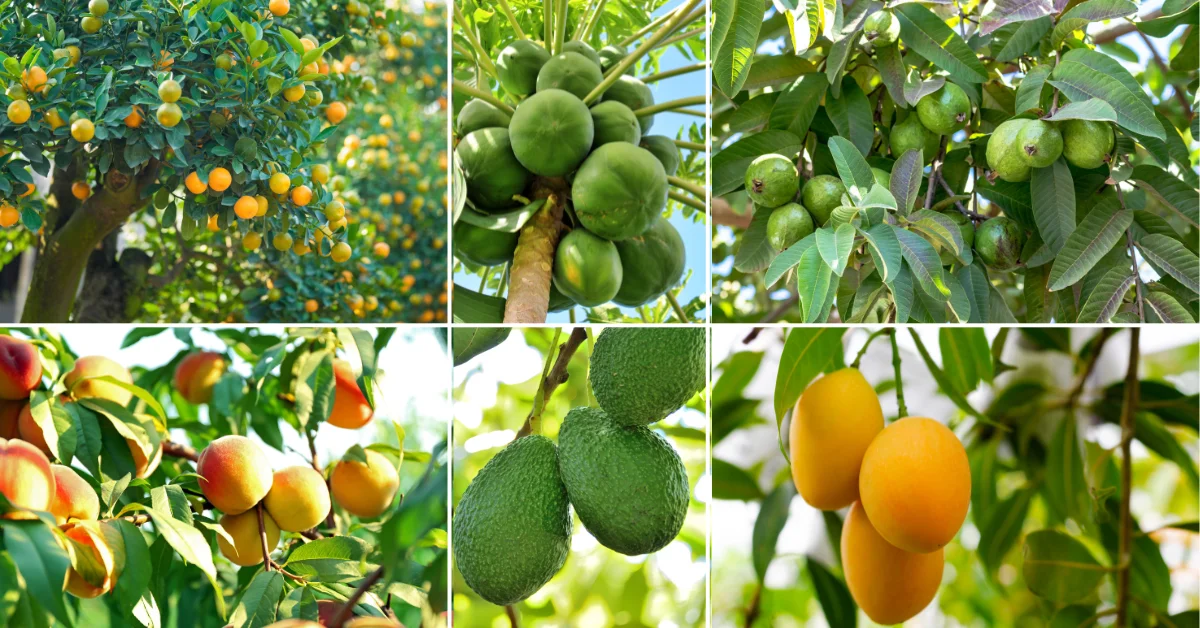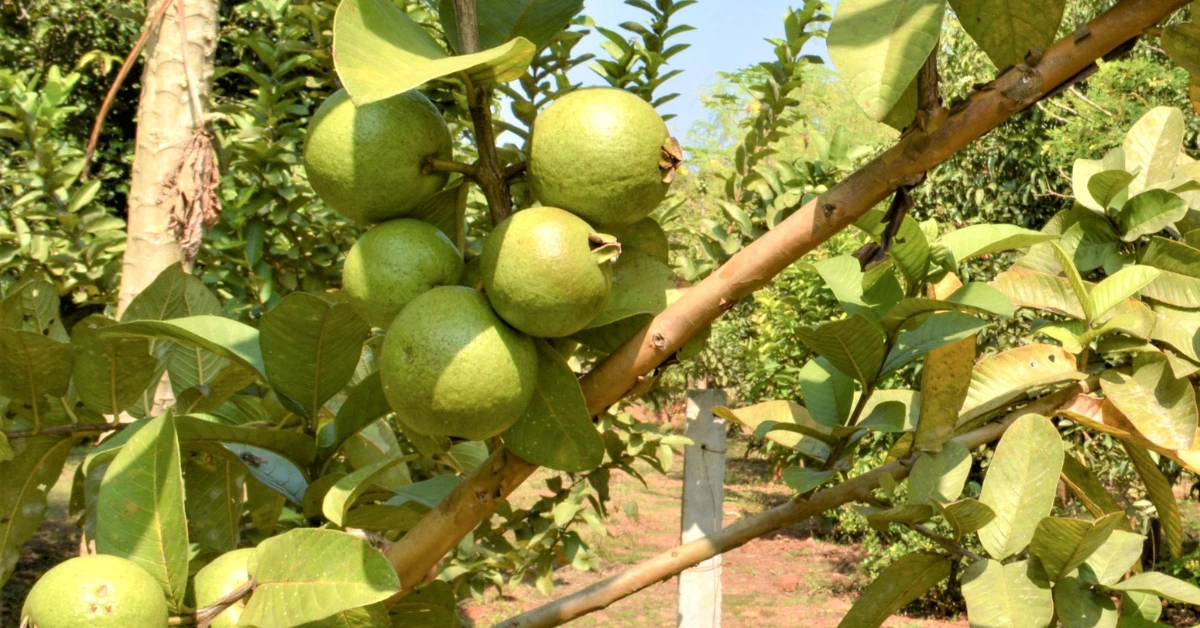Florida’s warm climate, abundant sunshine, and extended growing season make it one of the best places in the United States for cultivating a wide range of fruits. From juicy citrus to tropical mangoes and bananas, the Sunshine State offers a gardener’s paradise for both beginners and seasoned growers.
However, selecting the right fruit varieties for your specific region — North, Central, or South Florida — is essential for success. Factors like frost risk, soil type, humidity, and rainfall can all impact how well a plant performs.

Below, we’ll explore the best fruits to grow in Florida, why they thrive here, popular varieties, and essential care tips to help you enjoy a bountiful harvest year-round.
JUMP TO TOPIC
1. Citrus Fruits (Oranges, Lemons, Limes, Grapefruits)
Why They Thrive: Citrus fruits are practically a symbol of Florida. With its sandy soils, plentiful sunshine, and mild winters (especially in Central and South Florida), the state offers ideal conditions for oranges, lemons, limes, and grapefruits.

Popular Varieties:
-
Valencia oranges – perfect for juicing
-
Meyer lemons – sweet-tart and aromatic
-
Key limes – zesty and flavorful, ideal for pies
-
Water regularly, but avoid waterlogged roots
-
Protect young trees from frost in North Florida
Citrus Note: Be aware of citrus greening disease, which affects many growers statewide. Choosing disease-resistant varieties and monitoring your trees can help.
2. Mangoes
Why They Thrive: Mangoes love heat and humidity, making South Florida — where frost is rare — the perfect environment. These tropical trees adapt well to sandy or limestone soils and reward patience with sweet, fragrant fruit.

Popular Varieties:
-
Haden – classic Florida mango with rich flavor
-
Kent – juicy and less fibrous
-
Tommy Atkins – long shelf life, great for fresh eating
Care Tips:
-
Plant in a sheltered area to protect from wind
-
Prune annually to control size and shape
-
Expect 3–5 years before full fruit production
3. Avocados
Why They Thrive: Avocado trees flourish in warm, humid conditions with well-drained soil — exactly what Florida’s southern regions provide. Florida-grown avocados tend to be larger and have smoother skins compared to the smaller, bumpy Hass avocados from California.

Popular Varieties:
-
Hass – creamy texture, classic flavor
-
Choquette – large Florida variety with mild taste
-
Donnie – early-season fruiting
Care Tips:
-
Provide good air circulation to reduce fungal problems
-
Water consistently during dry spells
-
Protect from frost in cooler parts of the state
4. Bananas
Why They Thrive: Bananas are fast-growing tropical plants that thrive in Florida’s heat and humidity. They can be grown in both Central and South Florida and produce fruit within 9–12 months under the right conditions.

Popular Varieties:
-
Dwarf Cavendish – compact and productive
-
Blue Java – also called “ice cream banana” for its sweet, creamy texture
Care Tips:
-
Plant in a wind-protected area to avoid leaf damage
-
Keep soil moist and rich in organic matter
-
Fertilize regularly for strong growth
5. Figs
Why They Thrive: While figs aren’t tropical, they do very well in Florida’s North and Central regions, tolerating occasional winter chill. These hardy trees are low-maintenance and productive once established.

Popular Varieties:
-
Brown Turkey – reliable and sweet
-
Celeste – small, honey-flavored fruit
Care Tips:
-
Plant in full sun with well-draining soil
-
Prune lightly in late winter to encourage new growth
-
Mulch around the base to retain moisture and suppress weeds
6. Papayas
Why They Thrive: Papayas grow quickly in Florida’s tropical and subtropical regions, producing fruit within 6–12 months after planting. They prefer warm temperatures and well-draining soil.

Popular Varieties:
-
Red Lady – sweet and aromatic
-
Tainung – large, flavorful fruit
Care Tips:
-
Protect from frost in cooler areas
-
Plant multiple trees for better pollination (many papayas are male or female)
-
Avoid overly wet soil to prevent root rot
7. Guavas
Why They Thrive: Guava trees are resilient, drought-tolerant, and pest-resistant, making them a fantastic choice for Florida gardeners. They grow well in a variety of soils and produce fruit year-round in warmer areas.

Popular Varieties:
-
Pink Hawaiian – sweet with vibrant flesh
-
White Indonesian – mild and aromatic
Care Tips:
-
Plant in full sun for best fruit production
-
Prune regularly to keep the tree compact and productive
-
Can be grown in containers for patios or balconies
Key Considerations for Growing Fruit in Florida
1. Climate Zones:
-
North Florida: Cooler winters limit tropical fruit options, but figs, some citrus, and cold-hardy avocados do well.
-
Central Florida: Offers a mix of subtropical and some tropical fruits like bananas and guavas.
-
South Florida: True tropical climate allows for mangoes, papayas, avocados, and other frost-sensitive fruits.
2. Soil Preparation:
Florida’s sandy soil drains quickly and often lacks nutrients. Amend with compost, organic matter, or slow-release fertilizers to improve fertility.
3. Pest and Disease Management:
Keep an eye out for citrus greening, mango anthracnose, and scale insects. Integrated pest management (IPM) strategies and organic treatments can help keep problems under control.
4. Watering:
While Florida’s rainy season (June–September) provides natural irrigation, dry-season watering is essential for young or fruiting trees. Drip irrigation or soaker hoses help conserve water.
Tips for a Bountiful Harvest
-
Start Small: Focus on 1–3 fruit trees suited to your zone before expanding.
-
Choose Grafted Trees: These often fruit earlier than seed-grown trees.
-
Prune for Productivity: Regular pruning improves air circulation and fruit quality.
-
Plant for Pollinators: Some fruits, like papayas, need both male and female plants for best yields.
Conclusion
From the iconic oranges and grapefruits to tropical delights like mangoes, papayas, and bananas, Florida offers an incredible variety of fruits you can grow right in your backyard. By matching your plant choices to your region, preparing your soil, and following proper care techniques, you can enjoy fresh, flavorful fruit straight from the tree — no grocery store required.
Whether you dream of sipping fresh-squeezed orange juice in the morning or slicing into a homegrown mango on a summer afternoon, Florida’s unique climate makes it all possible. Plant wisely, care consistently, and your garden will reward you season after season.
